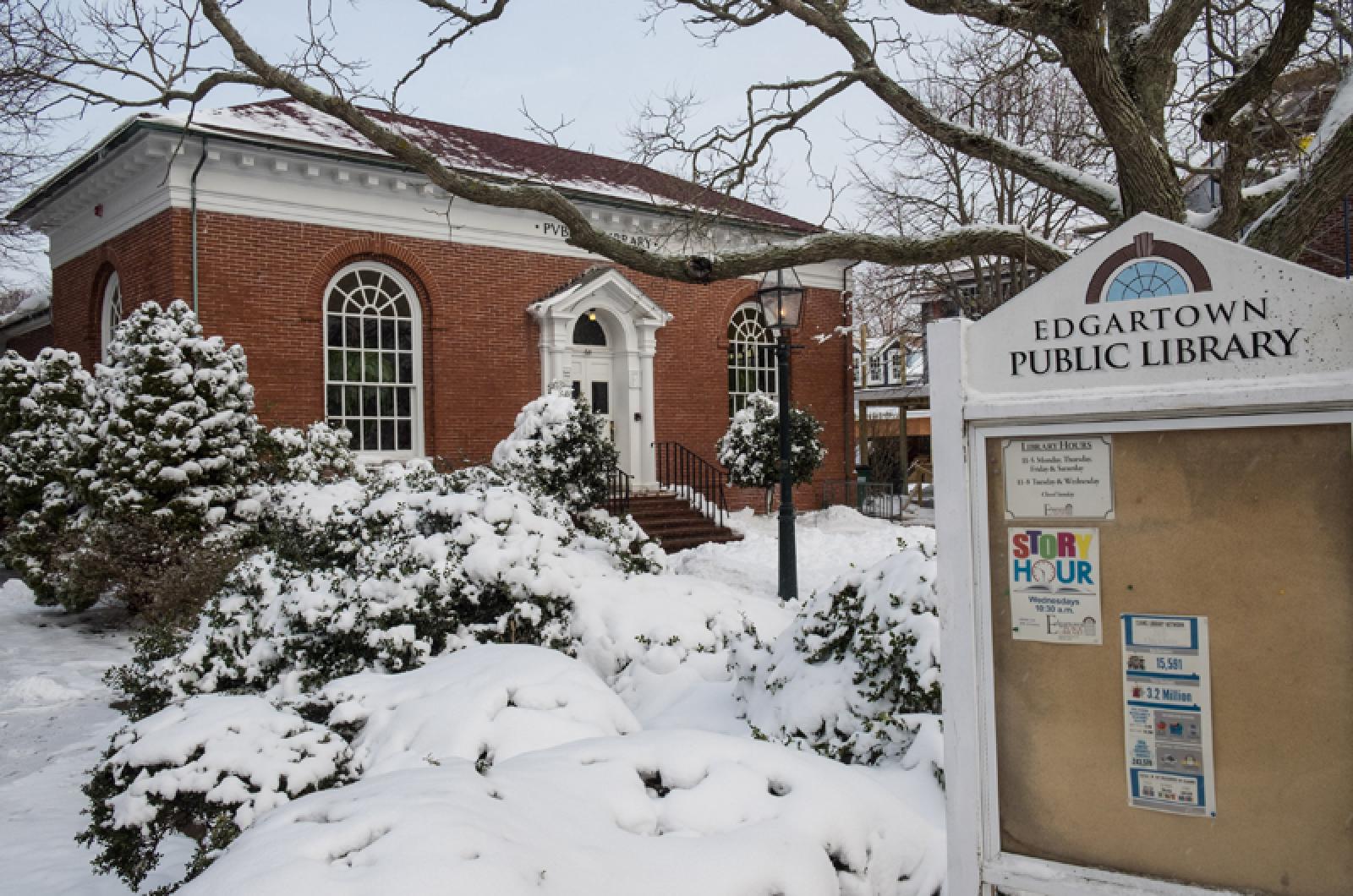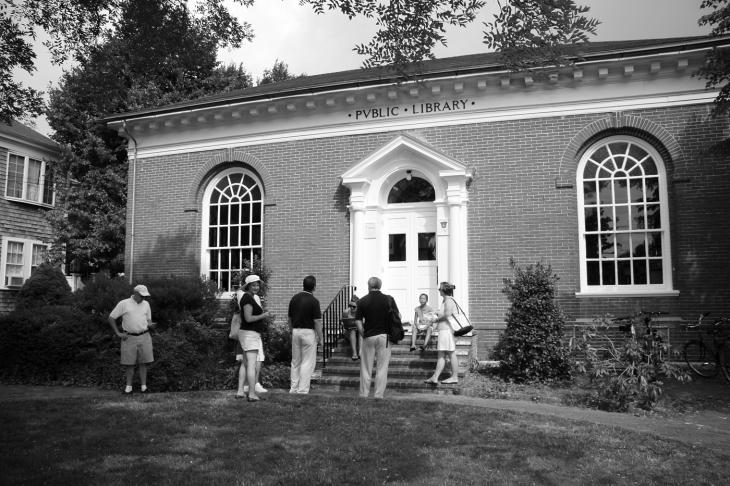It is really going to happen. The new Edgartown Library is finished and the shelves have arrived. There is a real elevator for those who have trouble on stairs, a large, bright and mildew free children’s room, a community meeting room, separate study areas, plenty of power points and parking. In a very short time, people will wonder what we ever did without this new and improved library. It fits our life today and will surely prove its worth in the future.
But what of the Carnegie building that will be left behind? I think that it will finally get its due as one of Edgartown’s architectural treasures. With the Martha’s Vineyard Preservation Trust on board, I am sure that will happen.
Why is it so important? I am shocked (I am also easily shocked, as regular readers know) at how little most people know about this building. Even the descendants of the architect who designed the building did not know its history. It has survived unsympathetic renovations, hurricanes, furnace blowbacks and lighting strikes. Even Margaret Henderson Floyd, the author of Architecture After Richardson, the only book on the history of Longfellow, Alden and Harlow, came to Edgartown for research and did not discover this gem, designed by Edgartown’s native son, Frank Alden who was born here in 1858 and died here in 1908. It was Frank who designed the building in 1904 and who was the one who probably persuaded Andrew Carnegie to provide the funds. (By this time, Carnegie had farmed out most of the library construction decisions to staff members.)
It may be the smallest of all the Carnegie Libraries in the world. And I mention this, because it was the firm of Longfellow, Alden and Harlow who also designed the largest of the Carnegie libraries: The Carnegie Institute of Pittsburgh. It was in Pittsburgh and the surrounding areas that Alden’s firm (later Alden and Harlow, when Longfellow left the firm to be a sole practitioner in Boston) designed the majority of the Carnegie Libraries. There are dozens of his extant buildings in Pittsburgh and Sewickley that are recognized by the Pittsburgh History and Landmarks Foundation, who sponsored the Henderson Floyd book.
Frank Alden was born in Edgartown in the Ewing house on Upper Main street. He was the son of Francis Alden of Dedham and Caroline Mayhew Smith Alden of Edgartown. He was born in the house of Josiah Smith, the Register of Deeds. Josiah, one of the Pohogonut Smiths, was married to Isabel Mayhew, who after Josiah died, married Frederick Baylies Jr. Frank was one of the first graduates of MIT’s architectural program, and went to work immediately for Henry H. Richardson. His work took him to Pittsburgh in 1886 where he supervised the construction of the Allegheny County Court House and Jail, Richardson’s masterwork. Richardson’s untimely death in 1886 forced all of his employees to seek other work, so Frank eventually ended up in the partnership with Longfellow and Harlow. He returned to Edgartown frequently, even when his home base was Pittsburgh. He returned one last time, to the house on North Water street that he had recently renovated, in July of 1908, knowing that he was dying. He died here on Sept. 15 and is buried in the Westside Cemetery.
So I am doubly grateful: Grateful to the town of Edgartown and the commonwealth of Massachusetts for our new building, and grateful to the Martha’s Vineyard Preservation Trust for taking on the restoration of the Carnegie Library.








Comments (4)
Comments
Comment policy »